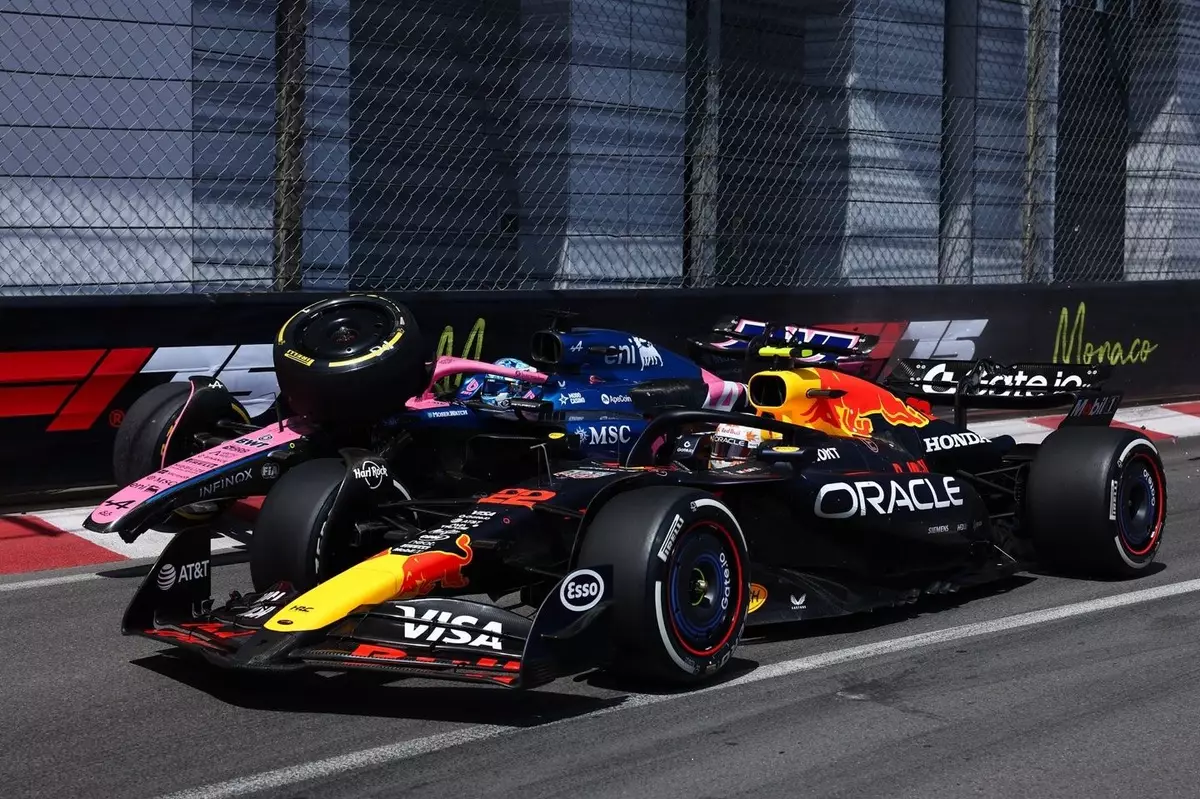The riveting world of Formula 1 is often fraught with intricate relationships and heated rivalries, especially when it comes to former teammates. The recent collision at the Monaco Grand Prix between Pierre Gasly and Yuki Tsunoda serves as a stark reminder of how swiftly camaraderie can turn to chaos. This incident reveals not only the complexity of racing dynamics but also highlights the profound consequences of miscommunication in high-pressure situations.
A Collision of Perspectives
Amid the glamour and precision of Monaco, Gasly’s sharp criticism of Tsunoda was the most striking spotlight on the event. Their collision, which took both cars out of contention, left Gasly blaming Tsunoda’s alleged “erratic” driving for the mishap. In a sport where split-second decisions determine race outcomes, Gasly pointed to Tsunoda’s movement under braking as the pivotal factor leading to their crash. This accusation showcases the crucial role of driver awareness and communication on the circuit, particularly between drivers who have previously shared a team.
Gasly articulated his viewpoint by explaining that Tsunoda had consistently braked on the racing line, creating an unpredictable driving environment. His comment regarding having “no brakes” at the moment of collision drew scrutiny, as he clarified that it had been taken out of context. This nuanced dialogue illustrates the often convoluted nature of reality within the cockpit. While both drivers experienced the incident through different lenses, the truth lies somewhere in their subjective accounts, demanding that fans and analysts alike consider the pressures faced during such moments.
Tsunoda’s Defense: A Different Game
On the other hand, Tsunoda’s response was equally compelling, as he expressed disbelief at Gasly’s assessment of his driving. The Japanese racer’s insistence that he had done nothing wrong reveals the deep psychological layers at play during a race. His claim that he was hugging the wall while maintaining his trajectory speaks to an instinctual understanding of racing, yet it raises questions about defensive driving. Was he fully aware of Gasly’s proximity? Did he effectively communicate his intentions, or did he err by not maintaining a safer distance?
In high-stakes environments like F1, the fragility of ego can magnify conflicts. For Tsunoda, an unapologetic stance in defending his actions may reflect a desire to assert himself as an emerging talent rather than merely a supporting character. However, it also puts him at risk of damaging relationships within the paddock that can affect team dynamics and performance in future races.
Alpine’s Broader Struggles
This incident was not an isolated issue for either driver, but rather a continuation of the larger narrative surrounding the Alpine team. Their performance during the Monaco Grand Prix was consistently underwhelming, culminating in disastrous qualifying sessions that saw both drivers struggling for pace. Gasly’s acknowledgment of the weaknesses of the A525 car in low-speed conditions paints a picture of frustration that festers within the ranks of Alpine.
The technical limitations of the car were clearly exposed on the Monte Carlo circuit, a track known for its unforgiving nature and precise cornering requirements. Gasly’s remarks on the need for compliance in the car’s setup underline an essential truth in racing: without a robust vehicle, even the most skilled drivers can find themselves sidelined in the championship chase. The disparity in performance compared to their competitors becomes a haunting reminder of the race’s complexity, where technology and talent must intertwine flawlessly to succeed.
Looking Ahead: Hope for the Future
Despite the tumult of Monaco, there is a palpable sense of optimism as both drivers gear up for the upcoming Spanish Grand Prix. Gasly’s belief that Barcelona’s layout will serve as a better match for Alpine underscores the resilience necessary for success in this sport. His prediction of improved performance based on prior experiences speaks volumes about the motivation driving both him and the team.
Ultimately, the Monaco crash exemplifies the nuances of communication, rivalry, and performance within Formula 1. It serves as a lesson in accountability and collaboration among drivers who must navigate both the physical and psychological challenges of their sport. As the engines roar back to life in Spain, Gasly and Tsunoda will carry the weight of their misadventure, hoping to transform their lessons learned into future triumphs.


Leave a Reply